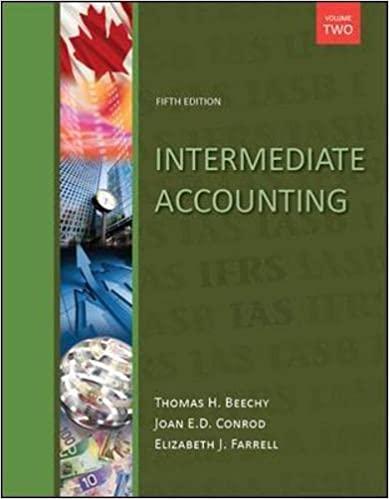Sandsupport Corporation (SC) is a privately-owned company based in Alberta. The company provides support services for the
Question:
Sandsupport Corporation (SC) is a privately-owned company based in Alberta. The company provides support services for the oil and gas industry, especially for new exploration not only in Canada, but also in other countries such as Venezuela and Mexico.
Due to the ever-increasing worldwide demand for energy and the resultant increase in exploration activity, \(S C\) is planning a major expansion of its operational capacity. As part of this expansion, the company needs to acquire a significant amount of new equipment. In the past, the company has obtained external financing only through debt, mainly via private placements of secured first-mortgage debentures with pension funds and other institutional investors.
Additional financing will be needed to acquire the new equipment. However, management is hesitant about obtaining more straight debt financing due to restrictive covenants (e.g., on debt to equity ratio) that are in place for some of SC's existing debt. Therefore, management is considering three alternatives.
Leasing is the first possibility that management is considering. SC leases quite a lot of equipment to its clients on short-term leases for specific projects, and it seemed logical to look into leasing as way for SC to acquire the equipment. Management has been in contact with GWC Finance Corporation about negotiating a lease. Under the potential lease arrangements, GWC would purchase the equipment from its German manufacturer; the manufacturer would deliver the machinery directly to SC. SC would agree to a lease contract that would enable GWC to classify the lease as a finance lease, in accordance with its status as a tax-qualifying lessor. Since the equipment is quite specialized, the lease payments would be "front-loaded," with most of the total lease payments payable in the first five years. GWC has suggested that SC may be able to enter into an agreement with one of SC's major clients (e.g., Suncor or Petro Canada) for the client to guarantee a substantial residual value-enough to reduce the minimum lease payments to less than \(90 \%\) of the equipment's fair value. SC would unofficially compensate the client through reduced fees for SC's services.
The second possibility would also involve leasing, but the lease would not be an obligation of SC. Instead, two SC shareholders would form a separate corporation and that corporation would enter into the lease with GWC. The new corporation would then lease the equipment to GWC with an initial lease term of five years. After the first five years, the lease would continue on a year-to-year basis automatically until the GWC lease expired. At that point, GWC would transfer title to the new corporation, which in turn would sell the equipment to \(S C\) for nominal consideration.
The third option involves the issuance of convertible preferred shares to the Alberta Teachers' Pension Plan (ATPP). The proceeds of the share issue would be used to buy the equipment. SC has never previously used outside equity financing, but preferred shares seems to be a logical answer to the financing problem faced by SC. SC would be obligated to pay dividends annually at \(8 \%\) of the paid-in value of the shares. Anytime after five years, ATPP could convert to common shares (for whatever number of common shares will amount to a current market value equal to the preferred shares' original paid-in value). As well, SC would be able to call the shares for redemption at any time after five years.
Management is very experienced at being a lessor, but not at all experienced at being a lessee. Therefore, the CFO has come to you for advice on the best route to take for the new financing. In particular, the CFO is concerned about the financial statement impact of these three alternatives.
Required:
Analyze the consequences of each of the above alternatives in a memo to your superior. Explain which one you would recommend for SC.
Step by Step Answer:






